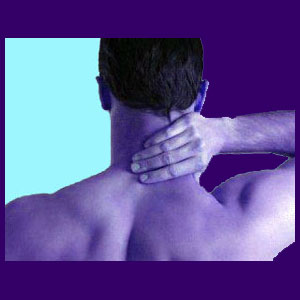
A neck brace is a protective orthotic device used to support the considerable weight of the head after a neck injury or during a severe neck pain condition.
Bracing is certainly traditional medicine, but still has valuable applications when prescribed for appropriate conditions. However, inappropriate or extended use of a cervical collar can be counterproductive, resulting in muscular atrophy and even an increased symptomatic expression. Always remember to consult with a qualified physician before using any style of cervical brace for any neck pain issue.
This essay explores how bracing is used to relieve pain and manage various cervical spinal problems in the modern medical sector.
Neck Brace Indications
Most people are given a cervical brace after significant neck trauma or after a confirmation of fractured vertebrae in the cervical spine. Any injury causing a broken neck is no laughing matter and must be treated carefully to ensure proper healing, full rehabilitation of range of motion and preservation of neurological functionality. A brace can be just the right device to protect the cervical spine during this healing time.
Braces prescribed for acute neck pain without a fracture are less useful and might actually be counterproductive to the healing process. Simple neck muscle pain might be severe enough to warrant a brace, but this device should only be used for a short time, to prevent tissue atrophy and the retardation of the healing process from a complete lack of use. Remember, gentle movement of many injuries is recommended by the majority of doctors and physical therapists, since motion increases circulation, oxygenation and overall healing response.
Other Neck Brace Functions
Another more specific use for bracing of the cervical spine includes post-surgical protection of the spine after an operation (especially in the upper back or neck). This use should be carefully monitored by your surgeon to ensure optimal healing after the procedure. Sometimes, a brace may be used for an extended duration after cervical spinal fusion to help the bones join together in a strong bond.
Braces are also sometimes used to treat neurological or neuromuscular diseases and disorders in which the patient can not support the weight of their own head. Obviously, this use is not typical for the average back pain patient, but is very important for people affected by these conditions.
Finally, neck bracing is sometimes integrated into a back brace program for highly specific types of scoliosis and other forms of spinal curvature. While this is less common today than in the past, some cases still warrant the addition of a brace orthotic to the cervical spine.
Neck Support or Brace Utilization
The old stereotype cervical braces are still seen so frequently in the court rooms of today’s back pain lawsuit industry. Some lawyers buy these orthotics in bulk and actually keep a few in the trunk of their cars, just to be safe and well prepared. While the picture of a poor soul wearing a brace might influence some naive judges and juries, most will see past this courtroom ploy and may actually hold the pitiful vision against the plaintiff.
Be careful using a brace for chronic neck pain and muscular conditions. Continuing use of any brace orthotic will certainly reduce the strength and integrity of the natural musculature, ligaments and tendons in the neck. While the brace might be useful in the short term, talk to your doctor about better long-term solutions for lasting painful complaints.
If you have been prescribed a neck support brace and are not sure if it is a wise recommendation, always feel free to get a second opinion. This can not hurt and may actually help you to get on a better path towards health or at least gain more confidence in your present treatment protocols.




